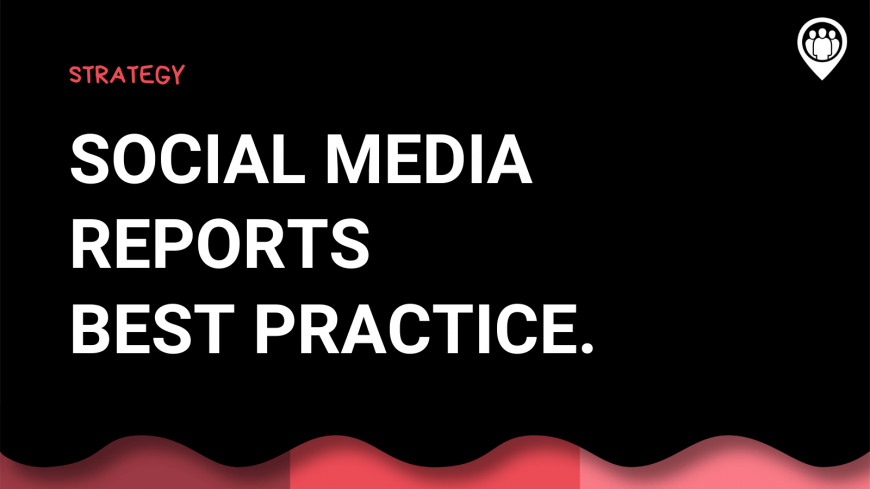Best Practices for Your Social Media Reports
Sahail Ashraf posted on 21 February 2022
When preparing and presenting social media reports to stakeholders, it is best to bear the following pointers in mind.

While social media reports can give you a whole world of information, that is sometimes the problem. Knowing what to focus on and what to give to your stakeholders is half the battle. In this post, we will go into detail on the information and practices for social media reporting that will ensure you deliver good work and useful work every time.
Make sure you have the right focus
If you are going to be reporting to multiple stakeholders, then it is important that you develop reports that still hold value for each audience. Rather than force them to dig up lots of information and metrics that are just not relevant to them, tailor multiple reports to multiple audiences.
This works well, because it ensures that you show value by reporting with real relevance. It also means that you don’t waste anyone’s time. It is rare for one report to be suitable for all stakeholders unless you are working with a small business.
Go for impact
This is all about being useful. Whatever report you bring up can usually be mined for further data. Every demographic can usually be tweaked and explored.
Your stakeholders will be anxious to see that your report brings them new insights and actionable information. So if you spend time trying to find the hidden story behind the data, you will create a real impact for them.
Did a certain demographic respond more positively to a video series you ran with? Or does a European audience respond better than an American one to competitions? Knowing your data in reports is vital, and you have to know them inside-out. If you consistently provide stakeholders with new directions and areas to explore, you’re providing valuable impact.
Use a platform
While it is still possible to complete a good social media report without an automated platform, it is more than just difficult. There is too much data to deal with and the amount of work involved requires a huge amount of skill and work hours.
An automated social media metrics platform takes care of all that data for you. It presents key insights that can help you deliver that value and impact your clients’ needs. And it can develop updates in real time, so when something spikes, you’re there and ready to report on it to your client. Not to mention competitor insights, performance projections, the list goes on…
Focus on predictions
Spot trends and then study them to project what might happen in the future. With high-quality social media reporting, clients expect to have some idea of what is going to happen with their accounts in the days and weeks ahead.
Use your metrics and data to analyse trends and work out where things are going. Are your competitors gearing up for a campaign? Do you know exactly what happens to your Follower rates at Easter? It’s questions like these that really show value in your work, and help clients to feel that they are receiving a ROI.
Get it timed right
The timing of your reports is also another area that you need to be on top of. Bearing in mind the variables such as your own calendar, and what the client expects, you should have a fairly specific understanding of how often you will report to clients.
This is linked to the metrics too. If you’re looking at metrics that are fast-moving (such as metrics around impressions) then you will need to have fast-moving reporting (or multiple reports) to make sure you are serving your clients well.
On top of all of that, certain campaigns may need their own reporting schedule, and this includes seasonal campaigns that are obviously bound by the time of year they are developed.
Looks are everything
Even the most die-hard of social media marketing managers will agree that social media metrics and data can be more than a little dry, not to mention complex.
The way around this is simple. You should be looking to make as much of your reporting as visual as it can be. There are plenty of great options in most reporting software and platforms to develop exciting presentations and charts. It makes sense to do this because your clients will feel a lot more engaged in the process. And it will actually help them truly understand what all the metrics are about.
Think about the above in relation to your own social media reporting and you should ensure you get it right every time.
Are you a social media professional? That’s great news. Try Locowise, one of the most exciting things to happen to social media marketing in years. It has all your data and metrics in one place, and lots more.





